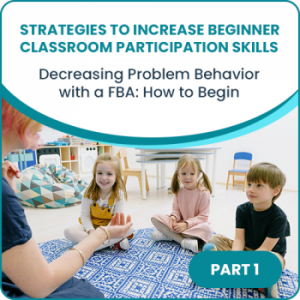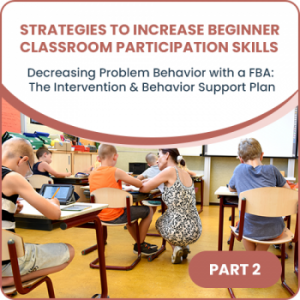Differential Reinforcement
Differential Reinforcement is the implementation of reinforcing only the appropriate response (or behavior you wish to increase) and applying extinction to all other responses. Extinction is the discontinuing of reinforcement of a previously reinforced behavior.
A basic principle of differential reinforcement is the concept of discrimination. Discrimination is developed through differential reinforcement by determining when reinforcement is and is not received. An example of differential reinforcement is rewarding a child for brushing their teeth before bedtime and withholding the reward when the child does not brush their teeth before bedtime.
Differential Reinforcement of Other Behaviors (DRO) – Also known as omission training procedures – an instrumental conditioning procedure in which positive reinforcement is periodically delivered only if the participant does something other than the target response.
Example: Reinforcing any hand action other than nose picking.
Differential Reinforcement of Alternative Behaviors (DRA) – is the reinforcement of behaviors that serve as alternatives to a problem or inappropriate behavior, especially alternative means of communication.
Example: A child could be taught to present his teacher with a PECS icon for a break from work instead of using tantrums to escape his undesired activity.
Differential Reinforcement of Incompatible Behaviors (DRI) – is the reinforcement of behaviors that are incompatible with a problem or inappropriate behaviors that are behaviors which the child cannot be done simultaneously.
Example: If a child is constantly touching his neighbors during playtime, he could be encouraged by reinforcements for keeping his hands in his lap or sitting on them.
Differential Reinforcement of Lesser Rates of Behavior (DRL) – is the reinforcement of periods of time in which the child exhibits the behavior at a predetermined lesser rate.
Example: When a child stands up in class ten times in an hour, he can be reinforced by standing only five times in an hour.
Variations When Using Differential Reinforcement
There are at least 3 variations to keep in mind when using DRO.
- Reinforcement is made contingent on the non-occurrence of the target behavior throughout the specified period of time. Reinforcement is given only after no instances of the target behavior occur during the entire interval.
Example: John is told, “If you do not get out of your seat during our English lesson (40 minutes long), you can be at the head of the lunch line.” If John meets this contingency by not getting out of his seat, reinforcement will be given.
- In many instances, it is desirable to break down sessions into smaller intervals of time. Example: We may want to reinforce John during the English lesson rather than wait until the end of the period. In this situation, it may be wise to provide reinforcement during smaller intervals of time within the period.
- The teacher may want to use DRO for completing specified academic work.
Example: If a student is completing an in-class writing assignment, the teacher may give a sticker or a happy face on her paper only when it is handed in with no doodles (a pre-determined target behavior).
Copyright © by Special Learning Inc. All right reserved.
No part of this article may be reproduced in any manner whatsoever without written permission except in the case of brief quotations embodied in critical articles and reviews. For information, contact Special Learning Inc., at: contact@special-learning.com












